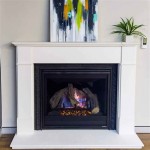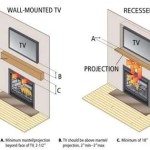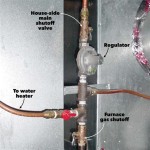Can You Install a Wood Burning Stove in an Existing Fireplace?
The question of whether a wood burning stove can be installed within an existing fireplace is a common one for homeowners seeking to improve heating efficiency and aesthetics. The short answer is often yes, but the process involves careful consideration of several factors, including safety standards, building codes, chimney compatibility, and the intended use of the appliance. A successful installation requires a thorough understanding of these elements, adherence to regulations, and potentially the involvement of qualified professionals.
Many homeowners find the idea appealing as it offers a way to update an unused or inefficient fireplace, providing a more effective and controllable heat source. A wood burning stove, when installed correctly, can offer significant advantages over an open fireplace, including improved heating efficiency, reduced draft occurrences, and enhanced safety features. However, the conversion is not a simple drop-in procedure and demands detailed planning and assessment to ensure a safe and compliant outcome.
The following sections delve into the key aspects that must be considered before proceeding with a wood burning stove installation within an existing fireplace.
Key Point 1: Assessing the Fireplace and Chimney Structure
The first and most crucial step involves a comprehensive inspection of the existing fireplace and chimney. This assessment is vital for determining the structural integrity and suitability of the system for accommodating a wood burning stove. Several factors need to be evaluated during this inspection.
Firstly, the condition of the chimney flue liner must be carefully examined. The flue liner, typically made of clay tiles, stainless steel, or cast iron, is responsible for containing and venting the combustion gases safely out of the building. Cracks, gaps, or deterioration in the flue liner pose a significant hazard, potentially allowing carbon monoxide and other harmful gases to leak into the living space, or even causing a chimney fire due to creosote build-up accumulating in the damaged areas. If the flue liner is damaged, it will need to be repaired or, more commonly, replaced with a new liner that is appropriately sized for the new stove.
Secondly, the structural integrity of the fireplace itself must be assessed. The firebox, hearth, and surrounding masonry need to be examined for cracks, crumbling, or other signs of damage. These issues can compromise the structural stability of the fireplace, making it unsafe to house a wood burning stove. Repairs to the masonry may be necessary before proceeding with the installation.
Thirdly, the size of the fireplace opening needs to be considered. The opening must be large enough to accommodate the dimensions of the chosen wood burning stove, ensuring sufficient clearance for installation and operation. If the opening is too small, modifications to the fireplace structure may be required, which can be a costly and complex undertaking.
Fourthly, the hearth extension must meet minimum safety standards. The hearth extension is the non-combustible area in front of the fireplace opening that protects the floor from sparks and embers. Building codes typically specify minimum dimensions for the hearth extension, depending on the size and type of wood burning stove being installed. Insufficient hearth extension can pose a fire hazard and will need to be addressed before the stove can be used.
Finally, it's highly recommended to engage a qualified chimney sweep or certified hearth professional to conduct a thorough inspection. These professionals have the expertise and tools to identify potential problems and provide recommendations for necessary repairs or modifications. A written report documenting the findings of the inspection is essential for ensuring compliance with building codes and insurance requirements.
Key Point 2: Chimney Flue Liner Requirements and Installation
The chimney flue liner plays a crucial role in the safe and efficient operation of a wood burning stove. As previously mentioned, the flue liner is responsible for containing and venting the combustion gases, preventing them from leaking into the living space and protecting the chimney structure from the corrosive effects of these gases. When installing a wood burning stove in an existing fireplace, it is often necessary to install a new flue liner or to upgrade the existing one.
The size of the flue liner is critical. It must be appropriately sized for the output of the wood burning stove. An undersized flue can restrict airflow, leading to incomplete combustion, excessive smoke, and the buildup of creosote. An oversized flue can also cause problems, allowing the combustion gases to cool too quickly, which can also lead to creosote formation. Stove manufacturers typically specify the recommended flue size for their appliances; this information should be carefully followed.
Stainless steel liners are the most common and recommended type of flue liner for wood burning stoves. They are durable, resistant to corrosion, and available in various sizes and thicknesses. The installation of a stainless steel liner typically involves inserting the liner down the existing chimney flue and connecting it to the stove. The liner is often insulated to improve draft and reduce creosote buildup.
The installation of a flue liner is not a do-it-yourself project. It requires specialized tools and knowledge to ensure a proper and safe installation. Engaging a certified chimney sweep or hearth professional is essential for this task. They will ensure that the liner is correctly sized, properly installed, and adequately sealed to prevent leaks. They can also navigate any obstructions or offsets within the chimney and ensure that the liner is properly connected to the stove and the chimney cap.
Local building codes and regulations often specify requirements for flue liner installation, including the type of liner, the installation method, and the required clearances from combustible materials. Adhering to these codes is essential for ensuring compliance and preventing potential hazards.
After the flue liner is installed, it should be inspected and tested to ensure that it is functioning correctly. A smoke test can be performed to verify that the flue is drawing properly and that there are no leaks. This test involves lighting a smoke bomb or burning a small amount of paper in the stove and observing the smoke exiting the chimney. Any leaks or draft problems should be addressed immediately.
Key Point 3: Stove Placement, Clearances, and Ventilation Considerations
The placement of the wood burning stove within the existing fireplace opening is critical for safety and performance. Proper clearances from combustible materials, adequate ventilation, and adherence to manufacturer's recommendations are essential for a successful installation.
The stove must be placed at a safe distance from any combustible materials, such as walls, furniture, and curtains. These clearances are typically specified by the stove manufacturer and are intended to prevent overheating and potential fire hazards. The clearances can vary depending on the stove model, the presence of heat shields, and the type of combustible material. It's crucial to consult the stove's installation manual and building codes to determine the required clearances.
Heat shields can be used to reduce the required clearances from combustible materials. These shields are typically made of metal or other non-combustible materials and are installed between the stove and the combustible surfaces. Heat shields can significantly reduce the surface temperature of the combustible materials, allowing the stove to be placed closer to them.
Adequate ventilation is also essential for the safe operation of a wood burning stove. The stove needs a sufficient supply of air to support combustion. Insufficient ventilation can lead to incomplete combustion, excessive smoke, and the buildup of carbon monoxide. Many modern stoves are designed with an external air intake, which allows them to draw air from outside the building. This can be particularly important in tightly sealed homes where there may not be enough natural air infiltration.
The connection between the stove and the flue liner must be airtight. Any gaps or leaks in the connection can allow combustion gases to escape into the living space. The stovepipe, which connects the stove to the flue liner, should be properly sealed with stove cement or high-temperature sealant. The connection should be inspected regularly to ensure that it remains airtight.
Consideration should also be given to the aesthetics of the installation. The stove should be placed in a way that complements the existing fireplace surround and the overall decor of the room. The stovepipe should be routed in a way that is both functional and visually appealing. Concealing the stovepipe behind a decorative panel or using a black stovepipe can help to blend it in with the surrounding decor.
Finally, it is essential to obtain all necessary permits and approvals from local building authorities before installing a wood burning stove. Building codes and regulations can vary depending on the location, and failure to comply with these codes can result in fines or other penalties. A building permit typically requires a detailed plan of the installation, including the stove specifications, the flue liner details, and the clearances from combustible materials. The installation may also be subject to inspection by a building official to ensure compliance with the codes.
In conclusion, while installing a wood burning stove in an existing fireplace is feasible, it demands careful planning, thorough assessment, and strict adherence to safety standards and building codes. The factors highlighted above are critical for ensuring a safe and efficient installation, contributing to the long-term performance and functionality of the heating appliance.

Converting A Fireplace To Wood Burning Stove Chesneys

Can You Install A Wood Burning Stove

Woodburner Installations In Victorian Fireplaces Cosy Stoves

Victorian Fireplace Hobbit Installation Small Stoves

Converting A Fireplace To Wood Burning Stove Chesneys

Converting Open Fire To A Wood Burning Stove In Exeter Simon Turner Showrooms Devon

Chimney Installations

Can You Install A Wood Stove In Fireplace Direct Stoves

Can You Install A Wood Stove In Fireplace Direct Stoves

Wood Buring Stove In An Existing Fire Place Installers
Related Posts








